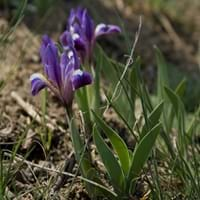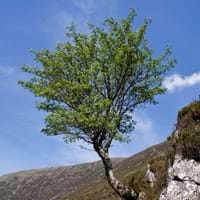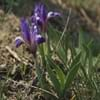Life Span
Perennial
Perennial
Origin
World, Pandemic, North America, Europe, Africa, Asia
Asia, Europe, Northern Africa
Types
Alizes
Bumblebee Deelite
Maui Moonlight
Langport Wren
Sarah Taylor
Titan's Glory
Thornbird
Jane Phillips
Orinoco Flow
Sorbus aucuparia fenenkiana, Sorbus aucuparia glabrata, Sorbus aucuparia praemorsa
Habitat
gardens, Hillside, Riverbanks, Warmer regions, Wet forest
Temperate Regions
USDA Hardiness Zone
Not Available
3-7
AHS Heat Zone
Not Available
7-1
Sunset Zone
Not Available
A1, A2, A3, 1a, 1b, 2a, 2b, 3a, 3b, 4, 5, 6, 7, 8, 9, 10, 14, 15, 16, 17
Habit
Clump-Forming
Oval or Rounded
Minimum Height
Not Available
Minimum Width
Not Available
Flower Color
White, Yellow, Blue, Purple, Orange, Pink, Rose, Coral, Peach, Burgundy, Lavender, Plum, Orange Red, Dark Salmon, Bronze, Chocolate, Black
White
Flower Color Modifier
Bicolor
Bicolor
Fruit Color
Not Available
Orange, Yellow
Leaf Color in Spring
Not Available
Green
Leaf Color in Summer
Not Available
Green
Leaf Color in Fall
Not Available
Dark Green
Leaf Color in Winter
Light Green
Dark Green
Leaf Shape
Long Linear
Pinnate
Plant Season
Not Available
Spring, Fall
Sunlight
Full Sun, Partial Sun
Full Sun, Partial Sun
Growth Rate
Medium
Medium
Type of Soil
Clay, Loam, Sand
Clay, Loam, Sand
The pH of Soil
Acidic, Neutral, Alkaline
Acidic, Neutral
Soil Drainage
Well drained
Average
Bloom Time
Not Available
Late Spring
Tolerances
Drought
Not Available
Where to Plant?
Ground, Pot
Ground
How to Plant?
From Rhizomes, Stem Planting
Budding, Grafting, Stem Cutting
Plant Maintenance
Medium
Medium
Watering Requirements
Does not require lot of watering, Keep ground moist, Water when soil is dry
Do Not over Water, Water in the early morning hours
In Summer
Lots of watering
Lots of watering
In Spring
Moderate
Moderate
In Winter
Average Water
Average Water
Soil pH
Acidic, Neutral, Alkaline
Acidic, Neutral
Soil Type
Clay, Loam, Sand
Clay, Loam, Sand
Soil Drainage Capacity
Well drained
Average
Sun Exposure
Full Sun, Partial Sun
Full Sun, Partial Sun
Pruning
Remove dead leaves, Remove dead or diseased plant parts, Requires very little pruning
Remove dead or diseased plant parts, Trim each shoot back to the first set of leaves
Fertilizers
All-Purpose Liquid Fertilizer
All-Purpose Liquid Fertilizer, Doesn't require fertilization when grown in rich soil
Pests and Diseases
Bacterial Diseases, Fungal Diseases, Viruses
Aphids, blister mites, Canker, fireblight, sawflies, Silver leaf
Plant Tolerance
Drought
Not Available
Flower Petal Number
Single
Single
Foliage Texture
Medium
Fine
Foliage Sheen
Matte
Matte
Attracts
Bees, Butterflies
Birds
Allergy
Asthma
Anxiety, Depression, High blood cholestrol, High blood pressure, Pain, Stress
Aesthetic Uses
Beautification, Showy Purposes
along a porch, deck or patio, Showy Purposes
Beauty Benefits
Not Available
Not Available
Environmental Uses
Air purification
Air purification, Food for birds, Shadow Tree
Medicinal Uses
Not Available
Diarrhea, Inflammation, Laxative, Urinary tract problems, Vitamin C
Part of Plant Used
Flowers, Leaves, Rhizomes, Root
Bark, Fruits, Wood
Other Uses
Making Perfumes, Oil is used for aromatherapy, Used as a sedative, Used as essential oil
Used for its medicinal properties, Used for woodware
Used As Indoor Plant
No
No
Used As Outdoor Plant
Yes
Yes
Garden Design
Bedding Plant, Cutflower, Mixed Border, Rock Garden, Wall
Feature Plant, Mixed Border, Topiary / Bonsai / Espalier
Botanical Name
IRIS
Sorbus aucuparia
Common Name
Iris
Rowan, Mountain ash
In German
Iris
Rowan Tree
In French
Iris
Rowan Tree
In Spanish
Iris
Rowan Tree
In Portuguese
Íris
Árvore de Rowan
In Polish
Irys
Rowan Tree
In Latin
Iris
Rowan ligno
Phylum
Tracheophyta
Magnoliophyta
Class
Liliopsida
Magnoliopsida
Order
Asparagales
Rosales
Family
Iridaceae
Rosaceae
Clade
Angiosperms, Monocots
Angiosperms, Eudicots, Rosids
Tribe
Irideae
Not Available
Subfamily
Iridoideae
Not Available
Number of Species
Not Available
Season and Care of Iris and Rowan Tree
Season and care of Iris and Rowan Tree is important to know. While considering everything about Iris and Rowan Tree Care, growing season is an essential factor. Iris season is Not Available and Rowan Tree season is Not Available. The type of soil for Iris is Clay, Loam, Sand and for Rowan Tree is Clay, Loam, Sand while the PH of soil for Iris is Acidic, Neutral, Alkaline and for Rowan Tree is Acidic, Neutral.
Iris and Rowan Tree Physical Information
Iris and Rowan Tree physical information is very important for comparison. Iris height is Not Available and width Not Available whereas Rowan Tree height is 1,000.00 cm and width 800.00 cm. The color specification of Iris and Rowan Tree are as follows:
Iris flower color: White, Yellow, Blue, Purple, Orange, Pink, Rose, Coral, Peach, Burgundy, Lavender, Plum, Orange Red, Dark Salmon, Bronze, Chocolate and Black
Iris leaf color: Not Available
Rowan Tree flower color: White
- Rowan Tree leaf color: Green
Care of Iris and Rowan Tree
Care of Iris and Rowan Tree include pruning, fertilizers, watering etc. Iris pruning is done Remove dead leaves, Remove dead or diseased plant parts and Requires very little pruning and Rowan Tree pruning is done Remove dead or diseased plant parts and Trim each shoot back to the first set of leaves. In summer Iris needs Lots of watering and in winter, it needs Average Water. Whereas, in summer Rowan Tree needs Lots of watering and in winter, it needs Average Water.





